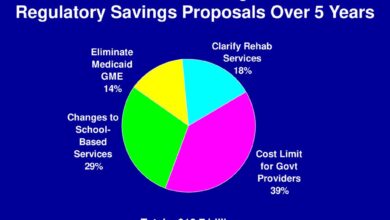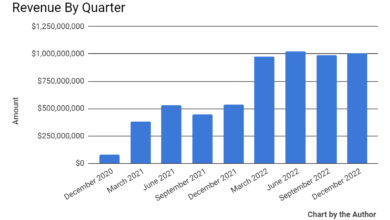
CMS Affordable Care Act Plan Switching Broker Agent Requirements
CMS Affordable Care Act plan switching broker agent requirements – navigating the complexities of the ACA marketplace can feel like a maze. But understanding the roles of brokers and agents, and the regulations surrounding them, is key to finding the right health insurance plan. This post breaks down the essential requirements, the process of switching plans, and helps you make informed decisions about your healthcare coverage.
We’ll explore the different ACA plan types, the advantages and disadvantages of using a broker, and how to find a qualified professional to guide you through the process.
From understanding the nuances of eligibility and benefits to navigating the CMS website and deciphering plan networks, we aim to empower you with the knowledge to confidently choose and switch ACA plans. We’ll also delve into the cost considerations, including subsidies and financial assistance, ensuring you find a plan that fits both your needs and your budget. Get ready to become a healthcare insurance savvy shopper!
Understanding CMS Affordable Care Act Plans
Navigating the Affordable Care Act (ACA), also known as Obamacare, can feel overwhelming. This guide aims to simplify your understanding of the different health insurance plans offered under the ACA, their key features, benefits, and eligibility requirements. Choosing the right plan is crucial for accessing quality healthcare at an affordable price.
ACA Plan Types
The ACA marketplace offers several types of health insurance plans, each with its own cost-sharing structure and level of coverage. Understanding these differences is essential for making an informed decision. The main types are Bronze, Silver, Gold, and Platinum plans, categorized by their actuarial value (AV). The AV represents the percentage of your healthcare costs the plan will cover on average.
Key Features and Benefits of Each Plan Type
The primary difference between plan types lies in their cost-sharing: premiums, deductibles, copayments, and out-of-pocket maximums. Bronze plans have the lowest premiums but the highest out-of-pocket costs. As you move up to Silver, Gold, and Platinum, premiums increase, but your out-of-pocket costs decrease. All ACA plans cover essential health benefits, including hospitalization, doctor visits, prescription drugs, and mental healthcare.
Specific benefits and covered services may vary slightly between plans and insurers.
ACA Plan Eligibility Requirements
Eligibility for ACA plans depends on several factors, including your income, citizenship status, and residency. Generally, you must be a U.S. citizen or legal resident, not be incarcerated, and have an income within a specific range. The income limits are adjusted annually and vary by household size and location. Individuals who are eligible for Medicare or Medicaid are typically not eligible for ACA plans.
Subsidies (tax credits) are available to lower the cost of premiums for those who meet certain income requirements.
ACA Plan Comparison Table
| Plan Type | Key Features | Benefits | Eligibility |
|---|---|---|---|
| Bronze | Lowest premiums, highest out-of-pocket costs (high deductible, higher copays) | Covers essential health benefits | US citizen or legal resident, income within ACA guidelines |
| Silver | Moderate premiums and out-of-pocket costs | Covers essential health benefits, often with cost-sharing subsidies available | US citizen or legal resident, income within ACA guidelines |
| Gold | Higher premiums, lower out-of-pocket costs | Covers essential health benefits | US citizen or legal resident, income within ACA guidelines |
| Platinum | Highest premiums, lowest out-of-pocket costs | Covers essential health benefits | US citizen or legal resident, income within ACA guidelines |
The Role of Brokers in ACA Plan Selection

Source: dreamstime.com
Navigating the Affordable Care Act (ACA) marketplace can be daunting. The sheer volume of plans, varying coverage options, and complex terminology can leave even the most diligent consumer feeling overwhelmed. This is where ACA insurance brokers step in, offering invaluable assistance in selecting the right health insurance plan.ACA insurance brokers act as intermediaries between individuals and the health insurance marketplace.
They provide a range of services designed to simplify the process of choosing a plan that meets your specific needs and budget. These services go beyond simply comparing prices; they involve a deep understanding of the ACA’s regulations and the nuances of different health insurance plans.
Services Provided by ACA Insurance Brokers
Brokers offer a comprehensive suite of services, including plan comparisons, personalized recommendations, application assistance, and ongoing support. They’ll analyze your individual circumstances – including your health history, income, and family size – to identify plans that offer the best combination of coverage and affordability. They can also help you understand the complexities of deductibles, co-pays, and out-of-pocket maximums, ensuring you choose a plan that aligns with your financial capabilities.
Beyond the initial selection, many brokers provide ongoing support, helping with claims processing and answering questions that arise throughout the year.
Advantages and Disadvantages of Using a Broker
Using an ACA insurance broker offers several advantages. The most significant is the time and effort saved. Brokers handle the complex research and comparison, allowing you to focus on other aspects of your life. They also possess in-depth knowledge of the ACA and various plan options, ensuring you make an informed decision. Furthermore, their expertise can help you avoid costly mistakes by selecting a plan that truly meets your needs.
Navigating the CMS Affordable Care Act plan switching process can be tricky, especially understanding broker agent requirements. The paperwork alone can cause a lot of repetitive strain, and I know firsthand how easily that can lead to carpal tunnel issues. If you find yourself struggling, check out this helpful resource on ways to treat carpal tunnel syndrome without surgery before you get overwhelmed.
Then, armed with a healthier wrist, you can tackle those CMS regulations with renewed focus!
However, using a broker does have some potential disadvantages. You’ll need to pay for their services, either through a commission paid by the insurance company or a direct fee. Additionally, finding a qualified and trustworthy broker requires research and due diligence.
Situations Where a Broker’s Assistance is Particularly Beneficial
A broker’s expertise is particularly valuable in several scenarios. For example, individuals with pre-existing conditions will benefit from a broker’s assistance in navigating the ACA’s protections and finding a plan that adequately covers their needs. Families with complex medical requirements or those needing specialized care will also find a broker’s guidance invaluable in selecting a plan with appropriate coverage.
Finally, individuals who are new to the ACA marketplace or who feel overwhelmed by the process will greatly benefit from the personalized support a broker provides. Consider someone recently diagnosed with a chronic illness, needing to understand the nuances of coverage and cost-sharing under various plans – a broker could be a lifeline in that situation.
Finding a Qualified ACA Insurance Broker
Finding a qualified broker is crucial to ensure you receive accurate and reliable advice. Several steps can help in this process:
- Check for licensing and certifications: Verify that the broker is licensed in your state and possesses any relevant certifications.
- Read online reviews and testimonials: Examine online reviews and testimonials to gauge the broker’s reputation and client satisfaction.
- Ask about fees and commissions: Clarify how the broker is compensated to avoid unexpected costs.
- Seek referrals from trusted sources: Ask friends, family, or healthcare providers for recommendations.
- Verify their experience with the ACA: Confirm the broker’s experience and expertise in navigating the ACA marketplace.
Switching ACA Plans: Cms Affordable Care Act Plan Switching Broker Agent Requirements
Switching your Affordable Care Act (ACA) health insurance plan can seem daunting, but understanding the process and factors involved can make it manageable. This process typically occurs during the annual open enrollment period, offering a chance to review your coverage needs and find a more suitable plan. However, it’s crucial to weigh the potential benefits against any drawbacks before making a change.
The Process of Switching ACA Plans During Open Enrollment
The open enrollment period for ACA plans is a specific time frame each year when you can enroll in, change, or renew your coverage. The process generally involves visiting the HealthCare.gov website (or your state’s marketplace) and navigating to the plan selection tool. You’ll need to provide updated personal and financial information, then compare available plans based on your needs and budget.
Once you’ve selected a new plan, you’ll need to confirm your choice and pay any applicable premiums. Remember to carefully review all plan details before finalizing your selection, paying close attention to coverage levels, provider networks, and out-of-pocket costs. Failure to complete the process by the open enrollment deadline will leave you without coverage until the next enrollment period.
Factors to Consider When Choosing a New ACA Plan
Selecting a new ACA plan requires careful consideration of several key factors. Your current health status and anticipated healthcare needs play a significant role. If you anticipate needing extensive medical care, a plan with lower deductibles and copays may be preferable, even if the monthly premium is higher. Conversely, if you are generally healthy, a plan with a higher deductible and lower premium might be more cost-effective.
The plan’s provider network is another critical factor. Ensure your preferred doctors and specialists are included in the plan’s network to avoid unexpected out-of-network costs. Finally, carefully review the plan’s prescription drug formulary to confirm that your necessary medications are covered. Comparing plans based on these factors will help you identify the best fit for your individual circumstances.
For example, a family with a history of diabetes might prioritize a plan with strong prescription drug coverage, while a young, healthy individual might opt for a plan with a lower premium despite a higher deductible.
Potential Consequences of Switching ACA Plans
Switching ACA plans can have both positive and negative consequences. A positive outcome might be finding a plan with better coverage at a lower cost. However, switching could also result in disruptions to your healthcare. You might lose your current doctor if they’re not in the new plan’s network, requiring you to find a new provider. Additionally, you might face a gap in coverage if there’s a delay in processing your application, or if you miss the open enrollment deadline.
Navigating the CMS Affordable Care Act plan switching process can be tricky, especially with the broker agent requirements. Understanding your health is crucial, and that includes knowing the risk factors that make stroke more dangerous , as pre-existing conditions can impact your plan choices. Therefore, choosing the right plan and broker is vital for managing healthcare costs and ensuring adequate coverage given personal health risks.
Changes in your prescription drug coverage are also a potential consequence. Your new plan might not cover your current medications, necessitating a change in medication or a significant increase in out-of-pocket costs. Thorough research and planning are crucial to mitigate these potential risks.
A Flowchart Illustrating the Steps Involved in Switching Plans
Imagine a flowchart. The first box would read: “Open Enrollment Period Begins.” An arrow points to the next box: “Visit HealthCare.gov (or your state marketplace).” Another arrow leads to: “Review Personal Information and Update as Needed.” Then, “Compare Available Plans Based on Needs and Budget.” An arrow leads to: “Select New Plan.” This is followed by: “Confirm Plan Selection and Pay Premiums.” Finally, an arrow points to: “New Plan Coverage Begins.” This visual representation clearly Artikels the sequential steps involved in switching ACA plans.
Each step requires careful attention to detail and adherence to deadlines.
Agent Requirements and Licensing for ACA Plans
Navigating the Affordable Care Act (ACA) marketplace can be complex, and that’s where licensed insurance agents play a crucial role. These agents help individuals and families understand their options, choose the right plan, and enroll in coverage. However, becoming an ACA agent involves specific requirements and responsibilities, varying significantly from state to state.
Becoming a licensed ACA insurance agent requires meeting specific state-level licensing and certification requirements. These generally involve passing a state-administered insurance licensing exam that covers the fundamentals of health insurance, the ACA, and related regulations. Many states also require background checks and the completion of pre-licensing education courses. The specific requirements, including the types of exams and the depth of pre-licensing education, differ substantially depending on the state’s regulatory framework.
State-Specific Licensing Requirements for ACA Agents
The licensing process for ACA agents isn’t uniform across the United States. Each state maintains its own regulatory body that oversees insurance licensing and sets its own specific requirements. These can range from the number of hours of pre-licensing education required to the complexity of the licensing examination itself. Some states may also have additional requirements based on the specific types of health insurance products the agent intends to sell.
For example, a state might require additional coursework or testing for agents focusing on Medicare products, even if those agents also sell ACA plans. This creates a complex landscape for anyone considering becoming an ACA agent, requiring careful research into the specific regulations of their target state(s).
Ethical Responsibilities of ACA Insurance Agents
ACA insurance agents bear significant ethical responsibilities. Their primary duty is to act in the best interests of their clients, providing unbiased advice and helping them choose the plan that best fits their needs and budget. This requires agents to possess a thorough understanding of the ACA, various plan options, and the nuances of health insurance coverage. Misrepresenting plan features, failing to disclose relevant information, or prioritizing commission over client needs are all serious ethical breaches that can result in disciplinary actions, including license revocation.
Agents are also obligated to maintain client confidentiality and adhere to all relevant state and federal regulations. Maintaining professional integrity is paramount to building trust with clients and ensuring the integrity of the ACA marketplace.
Comparison of Agent Requirements Across States
The following table provides a simplified overview. It is crucial to consult the specific state insurance department’s website for the most up-to-date and accurate information. The requirements shown are generalized and may not encompass all nuances of individual state regulations.
| State | Licensing Requirements | Continuing Education | Ethical Considerations |
|---|---|---|---|
| California | State insurance license exam, background check, pre-licensing education | Annual continuing education requirements vary by line of authority | Adherence to California Department of Insurance regulations, duty of good faith and fair dealing |
| Texas | State insurance license exam, background check, pre-licensing education | 24 hours of continuing education every two years | Adherence to Texas Department of Insurance regulations, avoidance of misrepresentation |
| Florida | State insurance license exam, background check, pre-licensing education | Annual continuing education requirements | Adherence to Florida Department of Financial Services regulations, client confidentiality |
| New York | State insurance license exam, background check, pre-licensing education | Continuing education requirements vary by line of authority | Adherence to New York State Department of Financial Services regulations, avoidance of conflicts of interest |
Navigating the CMS Website and Resources
The Centers for Medicare & Medicaid Services (CMS) website is the central hub for information regarding the Affordable Care Act (ACA) and its marketplace plans. Understanding its structure and resources is crucial for both brokers and consumers seeking to navigate the complexities of ACA plan selection and enrollment. Effective use of the website can save significant time and ensure access to the most up-to-date and accurate information.The CMS website, healthcare.gov, offers a wealth of information organized to guide users through the process.
Key sections include the plan finder tool, detailed plan information pages, and resources explaining ACA regulations and financial assistance programs. Navigating these sections effectively requires a strategic approach.
Key Sections of the CMS Website
The CMS website’s structure is designed to be user-friendly, but knowing where to look for specific information is essential. The main sections relevant to ACA plans include the “Find Coverage” section, which allows users to search for plans based on location, income, and other criteria. The “Learn About Coverage” section provides comprehensive information on ACA regulations, subsidies, and enrollment periods.
Finally, the “About Us” section offers details on CMS’s role in administering the ACA marketplace. Each of these sections contains numerous sub-sections and tools designed to assist users in making informed decisions.
Using the CMS Website to Find Plan Information
To find plan information, users should begin by using the “Find Coverage” tool. This tool requires users to input their location, zip code, and desired coverage start date. After providing this information, the website displays a list of available plans, sorted by factors such as monthly premium, deductible, and out-of-pocket maximum. Each plan listing provides a summary of benefits and costs, allowing for initial comparisons.
Clicking on an individual plan listing leads to a more detailed page with complete plan information, including a provider directory.
Tips for Effectively Comparing Plans Using CMS Resources
Comparing plans effectively requires careful attention to detail. The CMS website allows users to sort plans based on various criteria, including monthly premium, deductible, and out-of-pocket maximum. It’s vital to consider the trade-offs between these factors. A plan with a lower monthly premium may have a higher deductible, meaning higher upfront costs before insurance coverage kicks in.
Users should also compare the plan’s network of doctors and hospitals to ensure their preferred providers are included. The CMS website’s comparison tools allow for side-by-side comparisons of up to three plans at a time, facilitating a thorough assessment. Furthermore, using the cost estimator tool can help predict annual costs based on individual circumstances.
Locating a Plan’s Provider Network Using CMS Resources
To locate a plan’s provider network, navigate to the individual plan details page after selecting a plan through the “Find Coverage” tool. This page typically includes a link to a provider directory. This directory allows users to search for doctors, hospitals, and other healthcare providers within the plan’s network using various search criteria such as specialty, name, and location.
It is crucial to verify that your preferred doctors and hospitals are included in the network before selecting a plan, as out-of-network care is typically significantly more expensive. The CMS website also provides resources to understand how to use the provider directory effectively and interpret the information presented.
Cost Considerations and Affordability

Source: cspmsolutions.com
Choosing a health insurance plan under the Affordable Care Act (ACA) involves careful consideration of cost. The price you pay depends on several interconnected factors, and understanding these factors is crucial to selecting a plan that fits your budget and health needs. Many find the process daunting, but with a clear understanding of the cost drivers and available financial assistance, navigating the ACA marketplace becomes significantly easier.The cost of an ACA plan is primarily determined by the plan’s network of doctors and hospitals, the level of coverage (e.g., bronze, silver, gold, platinum), and your location.
Plans with larger networks of providers generally cost more, offering greater choice but potentially higher premiums. Higher-tier plans (like gold and platinum) offer more comprehensive coverage, leading to higher monthly premiums, but lower out-of-pocket costs when you need care. Geographic location plays a significant role, with premiums varying considerably across states and even within states depending on healthcare costs in a given area.
Your age and tobacco use also impact your premium.
Subsidies and Tax Credits, Cms affordable care act plan switching broker agent requirements
The ACA offers subsidies, also known as premium tax credits, to help make health insurance more affordable for individuals and families. These subsidies are based on your income and family size, reducing the monthly premium you pay. The amount of the subsidy is calculated to ensure that the cost of a silver plan does not exceed a certain percentage of your income.
Eligibility for subsidies is determined by your household income as a percentage of the Federal Poverty Level (FPL). For example, if your household income is below 400% of the FPL, you’re likely eligible for some level of financial assistance. The amount of assistance decreases as your income increases, eventually phasing out at the 400% FPL threshold.
Applying for Financial Assistance
Applying for financial assistance is a relatively straightforward process. You can apply through the HealthCare.gov website or your state’s marketplace. You’ll need to provide information about your income, household size, and other relevant details. The application system will then calculate your eligibility for subsidies and display the potential cost savings on different plans. It’s crucial to accurately report your income information, as inaccuracies can lead to penalties or a reduction in financial assistance.
Navigating the CMS Affordable Care Act plan switching process can be tricky, especially understanding broker agent requirements. The implications are huge, considering the potential impact on healthcare policy. This is especially relevant now that Robert F. Kennedy Jr. cleared a key hurdle on his path to becoming HHS Secretary, as seen in this article rfk jr clears key hurdle on path to hhs secretary.
His potential appointment could significantly reshape how the ACA and related broker regulations are enforced, impacting how easily people switch plans. Therefore, staying informed about CMS requirements is more crucial than ever.
Hypothetical Scenario: Subsidy Impact
Let’s imagine Sarah, a single mother with one child, earns $35,000 annually. Without subsidies, the cheapest silver plan in her area costs $450 per month. However, based on her income and family size, she qualifies for a $250 monthly subsidy. This means her monthly premium is reduced to $200, making the plan significantly more affordable and accessible. This $250 monthly reduction represents a considerable savings over the course of a year, amounting to $3000.
This illustrates how ACA subsidies can dramatically reduce the cost of healthcare coverage, making it attainable for many who might otherwise struggle to afford it.
Understanding Plan Networks and Provider Access
Choosing a health insurance plan involves more than just comparing premiums; understanding the plan’s network of doctors and hospitals is crucial for ensuring access to quality care. A plan’s network is essentially its list of healthcare providers – doctors, specialists, hospitals, and other facilities – who have agreed to provide services to plan members at a negotiated rate. Selecting a plan without verifying provider access could lead to significantly higher out-of-pocket costs or difficulty finding care.The importance of verifying provider access before selecting a plan cannot be overstated.
If your preferred doctor or hospital isn’t in the plan’s network, you’ll likely face substantially higher costs for their services, potentially making the plan unaffordable despite a low premium. This could involve paying the full cost of the visit upfront and then seeking reimbursement, a process that can be time-consuming and complex. In some cases, out-of-network care might not be covered at all.
Provider Network Verification Methods
Several methods exist to confirm whether a specific doctor or hospital is within a plan’s network. The most straightforward approach is to use the plan’s online provider directory. Many insurers maintain comprehensive, searchable databases on their websites. Alternatively, you can contact the insurance company directly via phone or email to inquire about specific providers. Finally, you can ask your doctor or hospital if they participate in the specific plan you’re considering.
Using a Plan’s Online Provider Directory
Most health insurance companies provide online directories to help you easily find in-network providers. These directories usually allow you to search by provider name, specialty, location (city, state, zip code), and sometimes even by accepting specific insurance plans. For example, you might search for “cardiologist” in “Los Angeles, CA” and filter by the specific insurance plan name. The results will typically display a list of in-network cardiologists in Los Angeles who accept that plan, along with their contact information, address, and possibly even patient reviews.
It’s important to double-check the information presented, as databases are not always perfectly up-to-date. If you have any doubts, it’s best to contact the provider directly to confirm their participation in the network.
Concluding Remarks

Source: dreamstime.com
Successfully navigating the Affordable Care Act’s plan switching process requires careful planning and understanding of the broker and agent requirements. Remember, taking the time to research and compare plans, understanding your eligibility, and finding a qualified broker can significantly simplify the process and help you secure the best possible healthcare coverage. Don’t hesitate to leverage the resources available through the CMS website and don’t be afraid to ask questions – your health and financial well-being depend on it!
FAQ Compilation
What if I miss the open enrollment period?
There are limited circumstances where you can enroll outside of open enrollment, such as a qualifying life event (marriage, birth, job loss). Check the CMS website for details.
How do I verify if a doctor is in my plan’s network?
Most plans have online provider directories. You can search by name, specialty, or location to see if your doctor is in-network.
Are all insurance brokers the same?
No. While all should be licensed, their experience and expertise can vary. Look for brokers specializing in ACA plans and read reviews before choosing one.
What are the penalties for not having health insurance?
The individual mandate penalty was eliminated in 2019. There are no longer federal penalties for not having health insurance.



